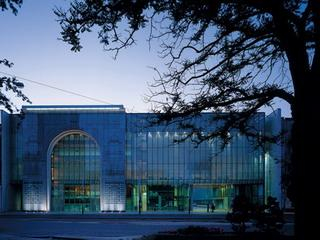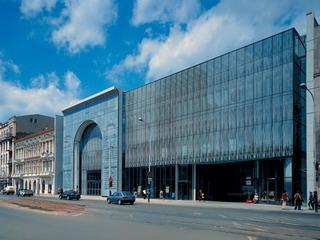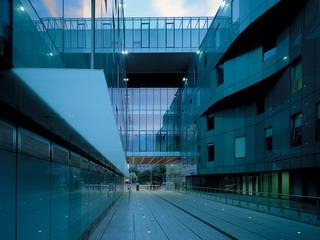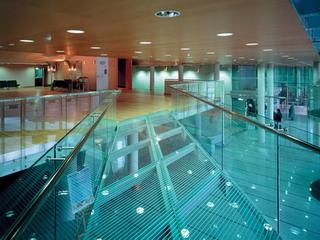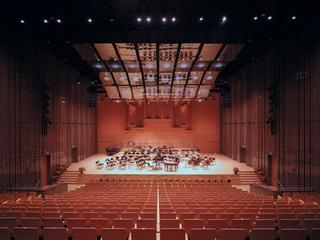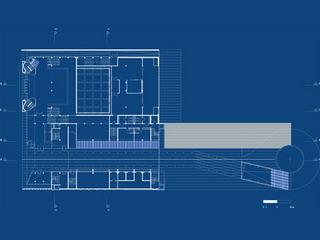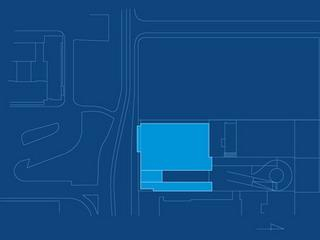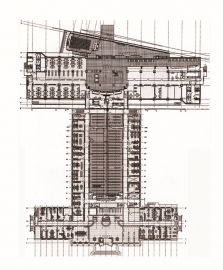National Philharmonic
The new Lodz Philharmonic was constructed right in the centre, close to Piotrkowska, the main street of the city, on the site of the former hall which ceased to be used at the beginning of the 90s because of its bad state of repair. In spite of the solution employed in the 1998 winning competition design - which envisaged the conservation of the most important fragment of the old edifice (built at the turn of the 19th and 20th centuries) - the historic facade was pulled down and replaced by a self-upporting concrete frame with a very simplified concrete cornice. This facade was faced with a layer of glass with a screened-on image of the original facade.
The interiors of the building are particularly attractive; owing to the glass expanse of the facade and such elements as the elevator, they create an impression of spatiality. The main auditorium with 750 seats has been inserted in the mass in such a way that a fragment of its bottom is visible in the foyer.
The character of spatial relations inherent in the Lodz Philharmonic emphasises their unique dichotomy, generating points of tension which are characteristic of Romuald Loegler. They define both the course of physical forces present in the building (the functions of its separate elements) and reflect the aesthetic idea of the author.
This dichotomy may be interpreted in many ways when analysing the building, and it concerns not only the relationship between the interior and the exterior, but also between the separate interiors. The most spectacular example of this, is the way the concert halls and the foyer were developed. The designers juxtapositioned the distinguished and moderate architecture of the concert halls (which constitute the structural and idealist heart of the building) with the dynamism of the spatial arrangements of its public zone (i.e. the passing levels of the foyer, bridges cutting through space, surprising openings preceded by densening space). Such architecture greatly resembles an exciting musical composition. In this context the metaphor architecture of sound gains a completely new dimension a real dimension.

